Al Ahsa
A trip out to Al Ahsa’s undulating sands offers a chance to climb the popular Al Qarah Mountain and explore the rock-hewn caves that weave through it, or just to gaze over the oasis from its summit. If you’re feeling adventurous, hire a four-wheel drive and head off road to explore the looming dunes. As evening falls, Al Ahsa’s bustling Souq Al Qaisariy comes alive, ringing with street hawkers and the timeless sounds of this historic port city.
In Al Hofuf, the city’s commercial hub, visit the country’s first royal school and the Eastern Province’s first masjid, Jawatha Mosque. Browse the hive of handicraft stalls and locally produced art, and sample the homegrown dates the region is famed for – both the Al Khalasah and Barhi varieties are farmed here. Other local delicacies to try, include the red-grained Hesawi rice the region is known for, and dishes such as Thareed (a breaded soup), Marqooq (a lambinfused stew), and the saffron-tinged rice dish Majboos.
What to see
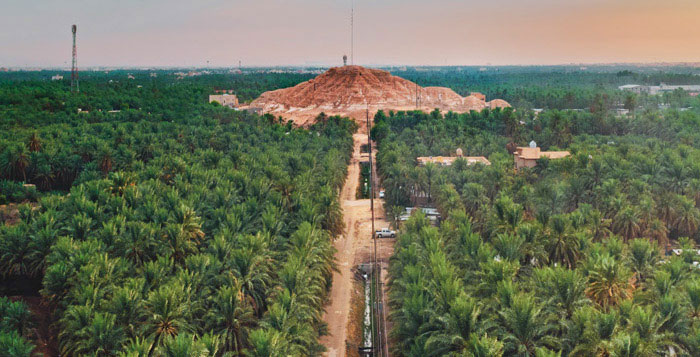
Al Ahsa Oasis
A desert oasis of shady palm groves and crystal clear springs, Al Ahsa Oasis stands as a dazzling haven against the untamed plains of the Rub› Al Khali (Empty Quarter). For millennia, this region’s fertile land made it a hub for traders and caravans crossing the region’s ancient trade routes, forging links across the Arabian Peninsula and beyond, and providing a stopping place for early pilgrims en route to Makkah.
many archaeological landmarks, which show traces of human settlement all the way back to the Neolithic period – Al Ahsa Oasis is rapidly gaining appeal as one of Saudi Arabia’s most captivating tourist destinations.
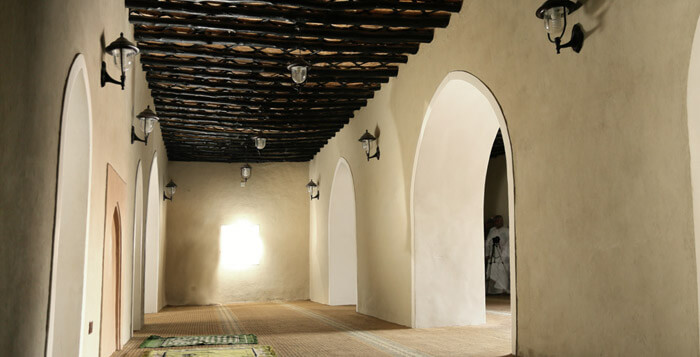
Jawatha Mosque
Built by the region’s Bani Abd Al Qays tribe in the seventh century, Jawatha Mosque is believed to have been the first mosque in eastern Arabia. It’s also where the second Friday congregation prayer was held. Much of the original building has been destroyed over the centuries, but the mosque was recently restored. Now Friday prayers are regularly recited there again.
Al Baha
A journey to Al Baha is a journey to a different Saudi Arabia. In a kingdom that’s often characterized by ochre desert, this high-altitude city is a place of ancient towers, lush forests and winding valleys.
The ancient Ghamid and Zahran tribes forged a unique cultural identity in the area, building 1,001 stone qasbah lookout towers that are only found here, as well as setting up a bustling souq. But the real joy is driving out of the city on hairpin mountain bends, past apricot and pomegranate orchards, into the 40 or so forests that surround the city. The road to the famous marble village of Dhee Ayn — through Tolkienesque valleys and past ruined towers — is almost as spectacular as the site itself.
What to see
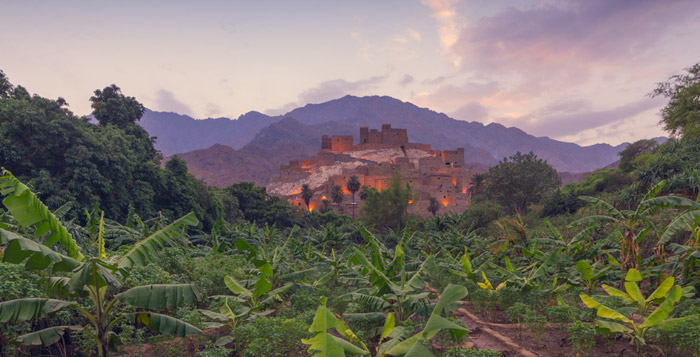
Dhee Ayn
Built on a white marble outcrop in the epic Bidah Valley, south of Al Baha, Dhee Ayn looks like an Arabian citadel on a Tuscan hillside. Often called the Marble Village, the cuboid buildings were made of stone and slate more than 400 years ago, and abandoned sometime in the 1980s. Exploring its narrow pathways today is an eerily beautiful experience, especially during the golden hours, when the light reflects on the white marble and the colorful mountains in the background.
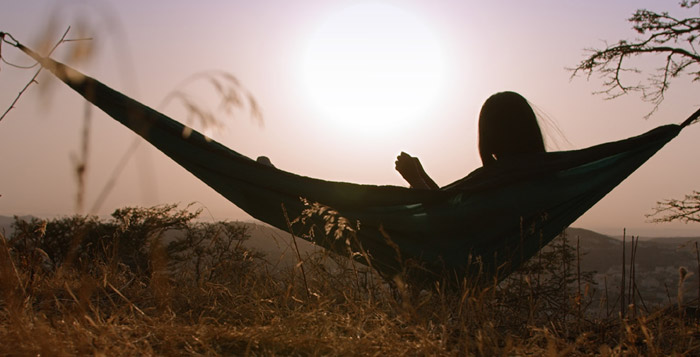
Raghadan Forest Park
In the cool Sarawat mountains west of the city, Raghadan Forest Park was once a wilderness area but has been sensitively adapted for visitors, with a paved trail up into forested hills populated by impish baboons. From the top of the path, there are beautiful views of the surrounding mountains and valleys, including the winding road that leads to Dhee Ayn. Food stalls and barbecues mean it’s possible to do as the locals do, and dine up in the hills as the sun goes down.

Sheda Village
Nestled halfway to the peak of Jebel Mussala Ibrahim is the hidden village of Sheda, offering dramatic views across the green cliffs and valleys of the Sarawat mountains. The picturesque drive up its slopes passes ancient, stone-made houses that dot the roadside, offering a glimpse of a time and communities past.
Al Jouf
Al Jouf is the Kingdom’s crossroad of ancient civilizations, with its spectacular natural landscapes, rich fertile lands, and desert climate. Located at the northernmost region of the Kingdom, Al Jouf is home to several archaeological sites and landmarks stretching over a long historical period from the Stone and Copper Ages to the Modern Age.
Formed by mountains, valleys, and flat sand dunes in the Nafud Desert, Al Jouf encompasses a range of attractions and archaeological sites including Sisira Well, Al Dar’i Quarter, Marid Castle, and the Al Jouf Museum. During wintertime, its climate gets extremely cold with temperatures going as low as 0 C°. The region has millions of olive, palm, and fruit trees, producing thousands of tons of olives and olive oil, with more than 23 oil presses and 3,000 agricultural projects and businesses, which helped the city earn the title of the Kingdom’s Food Basket.
What to see
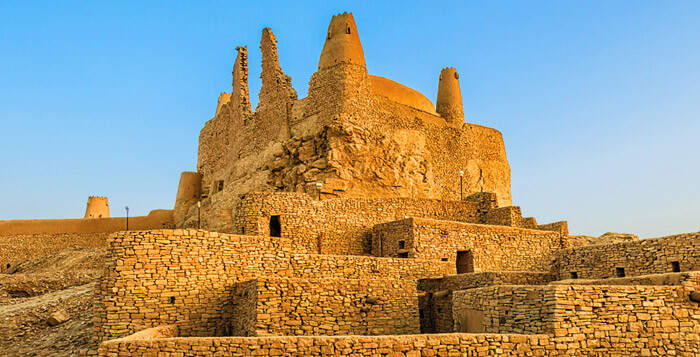
Marid Castle and Al Jouf Museum
Al Jouf Museum was constructed in 1416 AH in Dumat Al Jundal to host several historical artifacts in addition to Marid Castle, which dates back to the year 1 AD and served as the ruling headquarters during different periods. It contains many various sections, which display historical items, photos, paintings, and others.
Al Dar’i Quarter
Al Dar’i Quarter offers one of the most enjoyable tourist experiences and an opportunity to visit and explore the ancient town of Dumat Al Jundal, which dates back to the early Islamic period. It contains buildings, sites, and one or two yards surrounded by vast squares. It is located in Dumat Al Jundal next to Omar Bin Al Khattab Minaret, a mosque that was established back in 16 AH and named after Omar Bin Al Khattab. The mosque follows the ancient Islamic architectural style.

Visiting Olive Farms
Tourists can enjoy visiting any of the 3,000 small and medium sized agricultural businesses and farms, which make this area the biggest olive farm in the world. They can also visit oil presses in addition to packaging and distribution centers and get to know a part of the Kingdom’s Food Basket, containing more than 30 million olive, date, and fruit trees. Visits can be arranged in coordination with tour operators who offer several tourist programs to visit the famous farms in Al Jouf.
AlUla
The Kingdom of Saudi Arabia has long been a crossroads of ancient civilizations — a place of deep history that is continuously evolving.
Positioned in the northwest of the Kingdom of Saudi Arabia, AlUla is a stunning example of the country’s wonderful heritage. Its main city of the same name is located on the original pilgrimage route to Makkah, approximately 325km north of Medina. A place of extraordinary human endeavour, visitors to AlUla are immersed in a land of ancient civilizations spanning more than 200,000 years of human history.
Centred around its famed oasis and framed by sandstone mountains, AlUla’s geography, geology and climate have enabled successive civilisations to flourish here. Today, AlUla is rich in both human heritage and natural beauty, acting as a home for a wide range of flora, fauna and a living museum of human societies spanning thousands of years.
What to see
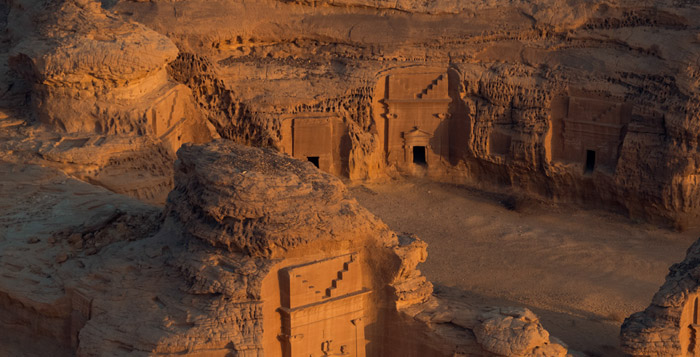
AlUla’s Historical Sites: Hegra, Dadan, Jabal Ikmah and More
The wind-swept expanses of AlUla are a true living museum spanning hundreds of years of Arabian history. Visit the rock tombs of Hegra, the ancient capital of Dadan and its Lion Tombs, the “open library” of inscriptions in the rocks at Jabal Ikmah, the labyrinth of mudbrick houses in the 12thcentury AlUla Old Town, the 18th-century Fort of Hegra, the Hijaz Railway Station and much more.
AlUla Old Town
Located in the narrowest part of the AlUla valley, the Old Town is built on a slight elevation, and is overlooked by the Musa bin Nusayr Castle, a citadel dating to at least the 10th century. The Old Town is a key cultural site to understand the continuity and evolution of the AlUla historic routes for trade and pilgrimage, and for the development in terms of agriculture and water management.
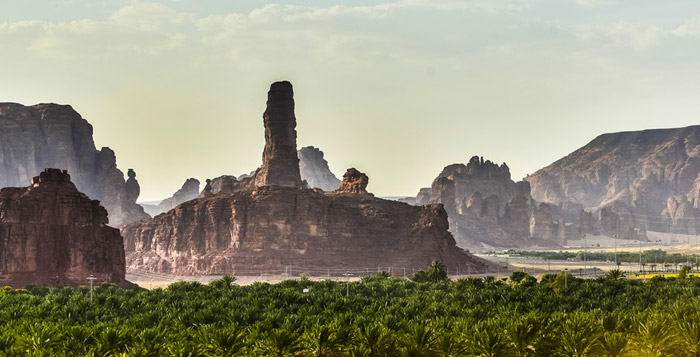
Nabataean Oasis
The ancient Oasis of Hegra was a lush garden consisting of three layers of vegetation. The first protective layer was formed by the date palm trees, providing shade and shelter to the numerous fruit trees below. Peach, apricot, grape, pomegranate, olive and fig trees filled the second layer while in the third layer wheat, legumes and cotton were grown.
Asir
Known for its mountainous environment and breath-taking views, the highland of Asir is the southern endpoint of the Red Sea coast and a treasure trove for adventurous souls looking for excitement.
With an abundance of heritage sites, outdoor thrills, and vibrant traditional markets, Asir is a culturally and geographically rich destination with plenty of places for the whole family to explore.
There are vibrant traditional markets in Abha, the culturally rich capital of the Asir region and sister city Khamis Mushait, and historic neighborhoods like Al Nasb and Al Basta. More broadly, this is a place to get immersed in the unique culture of the Asir region, whether exploring the Al Muftaha art village or learning about the customs of tribes in the spectacular nearby villages of Al Habala and Rijal Almaa.
What to see
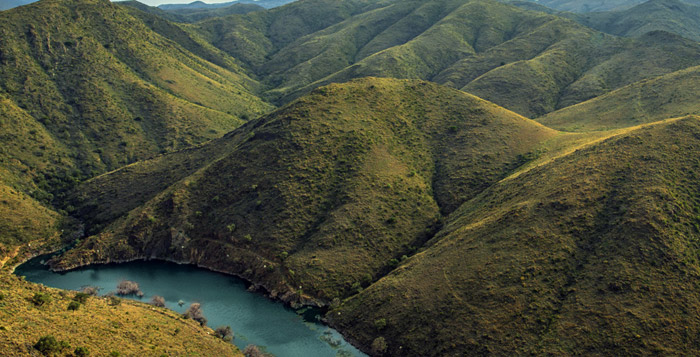
Green Mountain
One of Saudi Arabia’s more curious landmarks, Jebel Thera — better known as the Green Mountain — is a peak in the south of Abha, lit at night by neon green lights that emit a warm emerald glow across the city. The best way to get to the summit is by cable car, where there is a Lebanese restaurant and cafe with a terrace and panoramic views.
Al Habala
The hanging village of Al Habala is a curious wonder. A series of sandstone houses perched on the ledge of a sheer cliff, it was built almost 400 years ago by the Qahtan tribe, who reached the village by rope ladder (the name comes from ‘habal’, the Arabic term for rope). They lived here selfsufficiently until the 1980s, working small terraced farms. Today, there’s a cable car to the village from May to October, and visitors are greeted at the top by Qahtani men wearing traditional flower garlands.
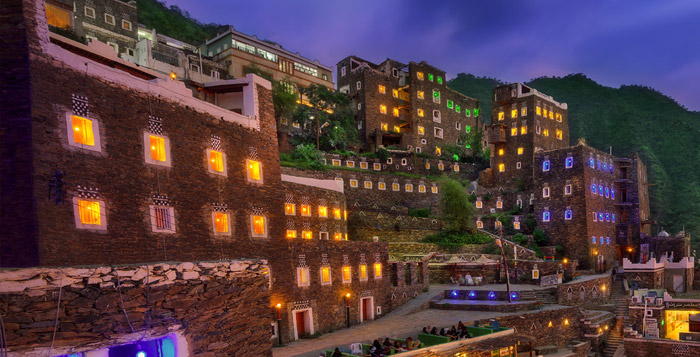
Al Muftaha Village
Abha’s bohemian arts center, Al Muftaha Village is a beautiful little quarter around a mosque daubed with calligraphy. Little galleries showcase the work of regional craftspeople and artists, whose work is often colorful and figurative. Walls are daubed with bright murals, many nodding to the geometric patterns that Asiri women would traditionally paint their homes with. Small museums either side of the mosque tell the story of Abha’s artistic heritage, including how the status of local families was defined by the quality of the murals in their homes.
Dammam
Boasting endless views of a tranquil Arabian Gulf, Dammam is a modern metropolis that thrives on its coastal location. Along with nearby Al Khobar and Dhahran, these ‘triplet cities’ are tailored to a lifestyle in the open air, brimming with lush green parks, airy waterfronts and sandy beaches.
The region also has a growing reputation for arts, sports and entertainment. It is home to the kingdom’s first street art exhibition in Al Khobar’s Bayoonya district, and a range of cultural hubs and museums. Dip into science and innovation at SCITECH or get a dose of pop culture at the quirky Taybeen and Alfelwah and Aljowharah museums. As evening falls, wander the walkways of Damman’s Share Al-Hob souq, where a lively theatre of traders, performers and street musicians awaits.
What to see
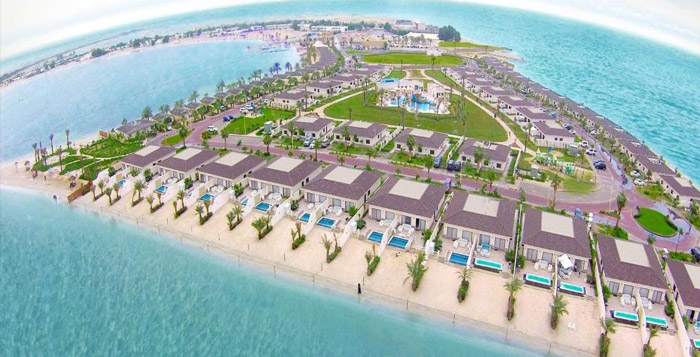
Half Moon Bay
A short drive south from Dammam, Half Moon Bay is a glorious pocket of beach resorts ideal for a family getaway. Dana Beach Resort offers watersports including jet-skiing, wakeboarding, sailing and diving, while the aqua play area features three water slides. Go-karting, horse riding and cycling are among the activities available back on land. The Radisson Blu Resort has boat trips and a palm-lined outdoor pool while Palm Beach Resort comes with tennis, football and volleyball courts along with beach-facing villas with an ocean view.
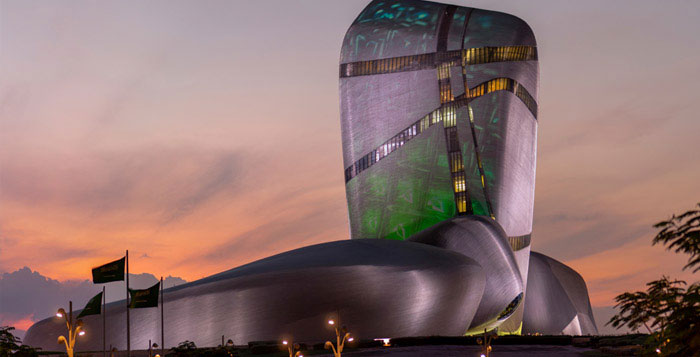
King Abdulaziz Center for World Culture
The iconic monolithic design of the King Abdulaziz Center for World Culture, known as Ithra, has become a symbol of Saudi’s cultural renaissance. The sprawling building houses a theater, library, cinema, galleries and museum, alongside a wealth of interactive activities for children. The Ithra Journey Tour, a -30minute guided walk, offers an ideal overview from where families can then plot their own extended route.

Al Khobar waterfront
Dancing fountains and landscaped gardens make this seafront stretch a family favorite, where kids can frolic in playgrounds as adults take Instagram-worthy snaps of the historic water tower and remarkable King Fahd Causeway. For a bite among the sights, discover a range of dining options on the new Ajdan Walk south of the new corniche, or immerse yourself in Al Khobar’s cafe culture at one of its dozens of waterfront coffee shops. Catch the sunset with a private boat trip across the waters.
Diriyah
Diriyah is the birthplace of the Kingdom and a symbol of the beauty, generosity and resilience of the Saudi nation and its people. The source of hundreds of stories, Diriyah is a vibrant destination filled with wonder and discovery for explorers traveling from near and far.
Founded in 1446 in a region surrounded by fertile agricultural land on the banks of Wadi Hanifa, Diriyah soon grew to become the center of knowledge on the Arabian Peninsula. The population of the Arabian Peninsula formed the nucleus of growing societies over hundreds of years and united under the umbrella of the first Saudi state between 1744 and 1818.
The topography of the area, with a fertile river valley offering shade and sustenance, meant that Diriyah became a natural resting point for traders, travelers and pilgrims from the Eastern and Northern parts of the Arabian Peninsula who were bound for Makkah and Medina.
What to see
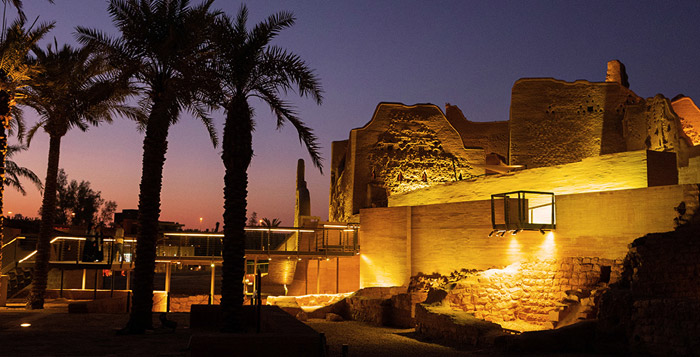
Al-Turaif
Within Diriyah lies the UNESCO World Heritage Site Al- Turaif. The city of Al-Turaif, built in 1744 and recognized as one of the world’s largest mud-brick cities, has been carefully restored to offer visitors a chance to walk in the footsteps of kings and heroes and explore Saudi history and culture in an authentic environment.
Museums of Ad Diriyah
Various museums are set to open in Ad Diriyah. They include: The Museum of Al Saud House, which will showcase the history of the ruling family and the kingdom’s heritage; The Museum of the Saudi State and Arabian Peninsula; The Museum of the -100Stories Journey, where visitors can learn about Saudi history and culture, and Misk Heritage Museum, an educational institute aimed at encouraging young people to get involved with the nation’s history and heritage.
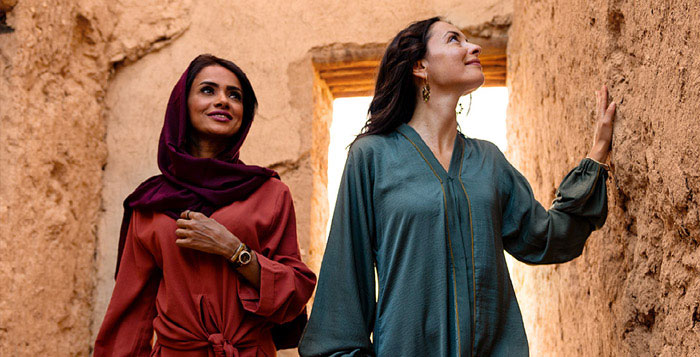
The Al Bujairy Quarter
newly renovated quarter is easy to navigate thanks to its many pedestrian walkways. Tucked into the alleyways, you’ll find numerous eateries where you can sample Arabian cuisine, as well as coffee shops, a juice bar, an ice cream parlor and a dessert shop. Set to connect to Al-Turaif by bridge, the quarter comes alive every Thursday night with a traditional Saudi ardha (sword-dancing) performance. The hour-long show starts at 9 p.m. and takes place under the Al-Turaif ruins.
Hail
Nestled between Mount Shammer to the north and Mount Salma to the south, the city of Hail was once the capital of all the Arabian Desert and home to legends like Hatim Al Tai, the Arabian poet whose altruism earned him spots in stories like “One Thousand and One Nights” (also known as “Arabian Nights”).
Today it’s the capital of the north-central region of Saudi Arabia bearing the same name and a popular stop during the pilgrimage to Makkah. The city of Hail is also known for hosting international events, including a Desert Festival celebrating the area’s culture and the Hail International Rally, where rally cars, quads and motorcycles race through the Nafud Desert and through Hail, Baqaa, Al Ghazalah and the village of Umm Al Qulban.
What to see
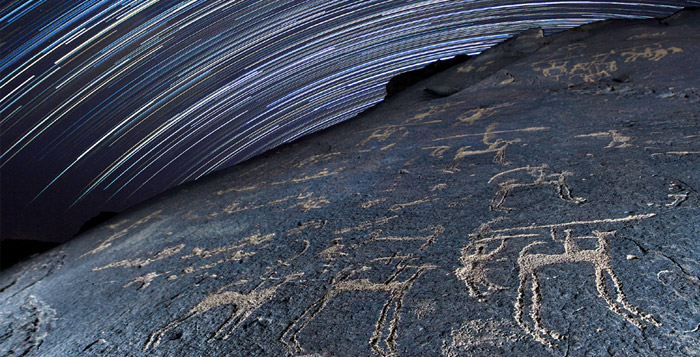
Explore Al Nafud Desert
Sitting on the edge of Al Nafud Desert, no trip to Hail would be complete without a visit to these majestic red sands. The Hail region is home to rock art now classified as a UNESCO World Heritage Site. Discover traces of what life was like more than 10,000 years ago through the inscriptions and petroglyphs just outside of Hail in Jubbah at Jabal Umm Sinman and Shuwaymis at JabalAl Manjor. Adventure seekers might also enjoy camping, dune bashing or sand surfing in the sands right outside the city.
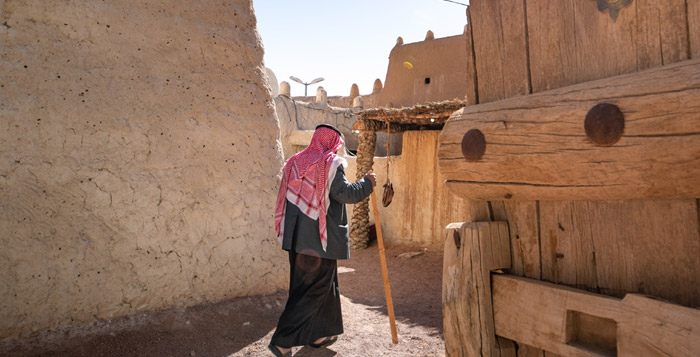
Castle Hop
If you see three castles, you’ve made it to the center of the city. A’arif Fort, Barzan Castle and Al Qishlah Castle are each worth stopping by, but if you have to pick only one, look up. Perched atop a peak, A’arif Fort is the oldest of the three and offers the best viewpoint over the city. A’arif has also been used as the meeting place to view the Ramadan moon and fire the iftar cannon to signal an end to the day’s fasting.
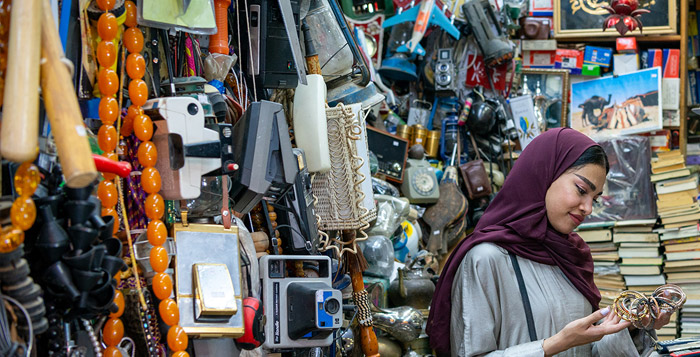
Souq and Market Shopping
Also directly in the center of town, the Hail Souq sells fruits, vegetables and the kingdom’s favorite – dates - as well as handmade crafts such as clay pots and woven mats. For those seeking souvenirs, this traditional souq should be on your itinerary. Alternatively, head east of the city’s center to search for hidden treasures at the Hail Flea Market—one of the kingdom’s last proper flea markets.
Jeddah
Jeddah’s unofficial motto is Jeddah ghair, or ‘Jeddah’s different’. No Saudi city has been more open to outside influences over the years than this ancient port, whether traders, international artists or Makkah-bound pilgrims. Today, Jeddah is Saudi’s buzzing cosmopolitan hub, home to gleaming hotels and big-ticket events like the Red Sea International Film Festival.
The city’s heart is still intact in Al Balad, the magical historical quarter that has undergone a renaissance in recent years. And the Red Sea is still central to it all – for trade, for diving among pristine reefs and fishing for the seafood Jeddah is known for. The city where Eve was laid to rest is a beguiling mix. It remains gloriously different.
What to see
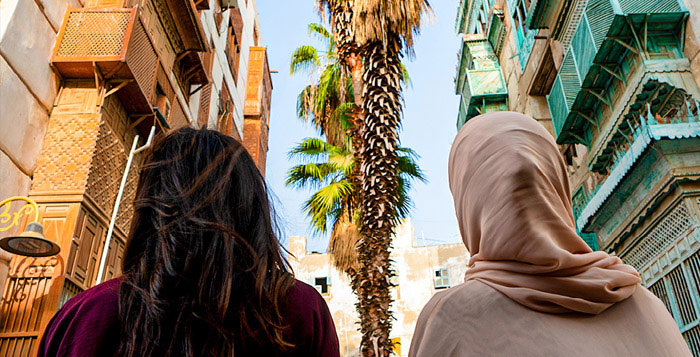
Al Balad
Jeddah’s UNESCO-listed old town is one of the Kingdom’s most evocative quarters, with narrow alleyways between ancient merchant’s houses leading to spice-scented souqs and glowing traditional bakeries. Many buildings have been restored in recent years, including the grand Nasseef House where Abdulaziz Ibn Saud stayed in 1925, before becoming king of a unified Saudi Arabia. Empty spaces have become quirky cafes or art galleries, as a district built in the seventh century looks to the future.
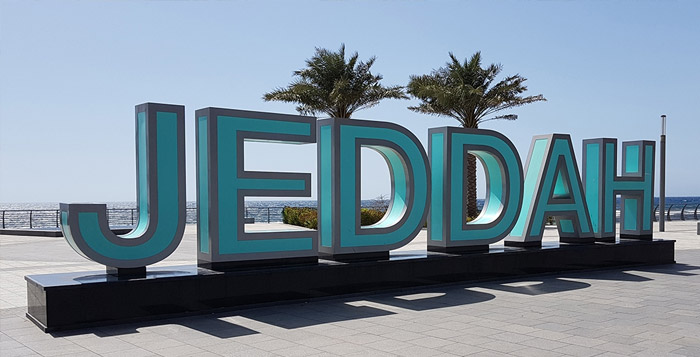
Jeddah Corniche
Jeddah’s 4.2km corniche has been transformed into a place of piers, swimming bays, restaurants and lushly landscaped walking and cycle paths. Iconic sculptures by the likes of Henry Moore and Joan Miro, which first arrived in the city in the 1970s, are dotted along the waterfront. For many, coming here is about watching the sun set over the Red Sea, then seeing the launch of the -300meter King Fahd’s Fountain, the world’s tallest, with its great jet of water lit until midnight and visible across the city.
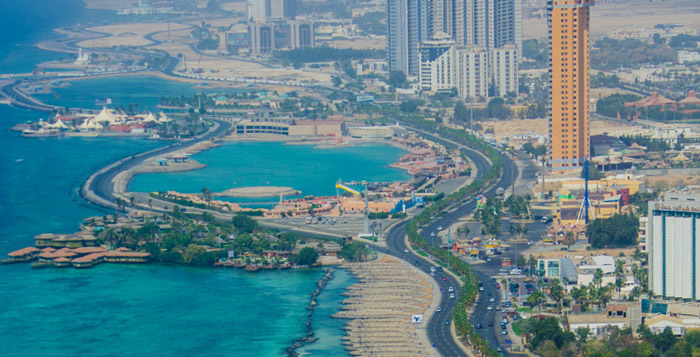
Tayebat City
Jeddah has a rich -2,500year history of fishing tribes, early Arabian trade, and later, pilgrims. Tayebat City tells this story, and that of the wider Arabian peninsula. Built in traditional Hijazi style, with roshan window screens and ornate minarets, the vast complex is set over four floors and 18 wings, with more than 60,000 items on display. Explore ancient coins and manuscripts, traditional Saudi costumes and a recreation of the Kaaba, the sacred black cube at the centre of Makkah’s Grand Mosque.
Makkah
For many Muslims around the world, an opportunity to visit Makkah is the ultimate blessing. This is the holiest city in Islam: the birthplace of the Prophet Muhammad and the city where the Quran was first revealed to him. It’s also a fixture in observant Muslims’ daily lives, as they orient themselves toward Makkah to pray five times a day. The annual Hajj pilgrimage to the city is one of the five pillars of the faith, but millions of people journey to the city year-round to perform the shorter Umrah pilgrimage as well.
Since the vast majority of the visitors are pilgrims—non-Muslims aren’t permitted to enter the city— most travelers spend as much time as possible within the opulent complex of the Grand Mosque, which is a lively hive of activity at all hours of the day. But if you have time to spare once you’ve completed the required steps of the Umrah, the historic city has much to offer to complement your understanding of the region and the faith itself, from museums to landmarks that were backdrops to some of the most pivotal moments of Islam’s earliest days.
What to see
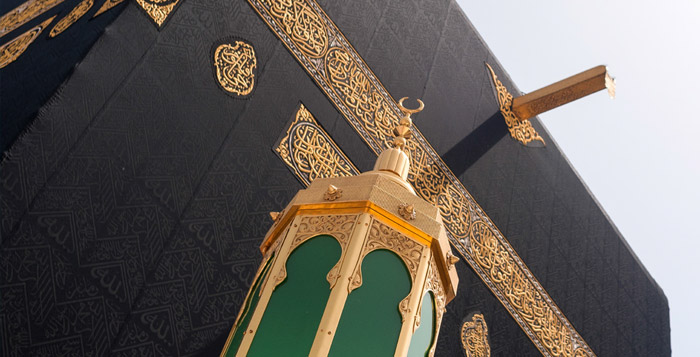
Masjid Al Haram
At Makkah’s heart is the expansive Grand Mosque, which can accommodate as many as 4 million worshippers. Its focal point is the Kaaba, the cube swathed in black silk with gold calligraphy at the center. The holiest mosque in Islam, this is where pilgrims perform the Umrah, by donning the appropriate attire and performing prescribed steps like the tawaf (walking around the Kaaba seven times) and strolling between the hills of Safa and Marwa seven times. If you have any questions about the steps, ask your travel agent for a pamphlet or pick up a book before you go.

Museums
Makkah has a host of fascinating, intimate museums that shed light on the city’s history as the birthplace of Islam and a crossroads for travelers from all over the world for centuries. The Exhibition of the Two Holy Mosques guides visitors through the construction and many phases of the Masjid Al Haram in Makkah as well as the Masjid An Nabawi in Medina—browse intricate marble arches, reclaimed wooden doors and much more, saved and restored from previous iterations of the mosques. You’ll have to do some wrangling to get permission to visit the Kiswah Museum next door—though it’s still well worth the effort to see where the kiswah, the -670kilogram black silk cloth draped on the Kaaba, is made by hand, and woven with calligraphic inscriptions done in threads made from real gold and silver.
Medina
Medina is Islam’s second holiest city, making it a key destination for millions of pilgrims traveling to Saudi Arabia for Hajj or Umrah. The city is centered around Al Masjid an Nabawi, also known as the Prophet’s Mosque, which was constructed by the Prophet himself and is also where he is buried.
Medina is where the Prophet Muhammad lived and taught after the migration from Makkah in 622 A.D., called Hijrah. This year is so important in the history of Islam that it marks the start of the Islamic calendar. Although the city’s name is usually written as Medina in English, its full name is Al Medina Al Munawwarah, meaning “the Enlightened City.” Because of the city’s pivotal role in the Prophet Muhammad’s life, making a trip to Medina is a lifelong dream for many Muslims.
What to see
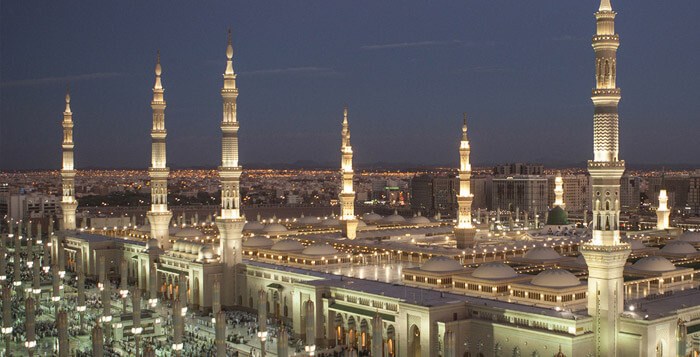
Al Masjid an Nabawi (The Prophet’s Mosque)
The final resting place of the Prophet Muhammad is in this stunning -10minaret mosque, which can accommodate 1 million visitors and is open 24 hours. The Prophet’s tomb is located under the mosque’s only green dome, in its southeastern corner. After his arrival in Medina, the Prophet Muhammad helped construct the mosque, originally an open-air building, which has since been expanded numerous times by subsequent city rulers. The area between the minbar and the Prophet Muhammad’s tomb is known as Rawdah ash Sharifah, or the Noble Garden, which is one of the Gardens of Paradise. Tradition says that prayers uttered here are never rejected.
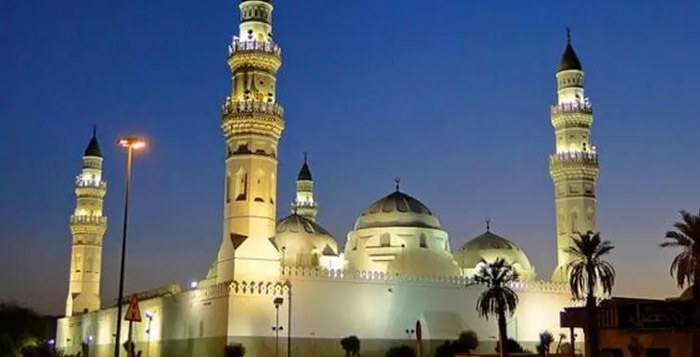
Quba Mosque
On the migration from Makkah to Medina in 622, the Prophet Muhammad and his followers stopped in the village of Quba and put down the foundation stone of the world’s first mosque. Worshippers have gathered here ever since, though the current building is a more recent construction. Once outside the boundaries of Medina, the mosque and the surrounding area have been fully absorbed by the city, and Quba Mosque sees a steady stream of visitors. Nearby Quba City Market sells dates, perfumes and other local specialties.
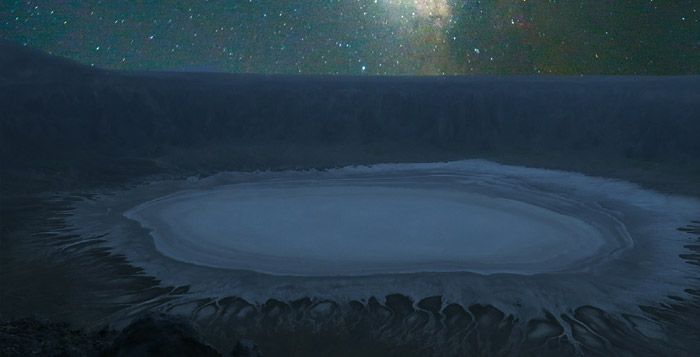
Mount Uhud
A major pilgrimage site, Mount Uhud is the place where Muslim forces led by the Prophet Muhammad battled troops from Makkah. The mountain rises about 3,500 feet (1,077 meters), and it can be climbed to better observe the battlefield. Nearby is the Uhud Martyrs Cemetery, where 85 of the slain Muslim soldiers are buried. Mount Uhud is northeast of Medina’s city center.
Red Sea
The Red Sea coast is a stretch of richly varied cultures: from the port city of Jeddah to the fertile mountains of Taif, via the turquoise-fringed coast around Yanbu.
The Red Sea is home to an abundance of flora and fauna including rare species such as dugongs and green and hawksbill turtles. As the world›s fourth largest barrier reef system, home to untouched corals and a significant number of endangered species, the Red Sea is a haven of natural beauty and one of the few destinations to have such diversity so close to each other.
Inland from the coast, the area around the Red Sea features miles of sweeping desert and dramatic landscapes that include dormant volcanoes, rich natural environments and ancient archaeological sites. The area is crisscrossed by trading routes that date back to the Nabataean civilization, reflecting the history of the region as part of the Incense Trail and the maritime spice route.
What to see
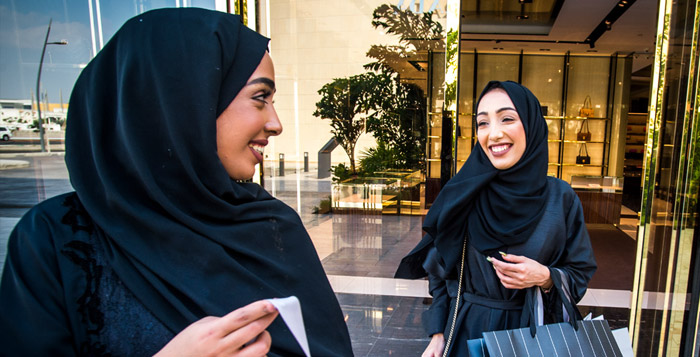
Shopping
The shopping is just as diverse as the landscape from the laden stalls of Al Hada’s farm markets to the high-gloss boutiques of Jeddah’s Boulevard. In Tabuk, venture to Souq Twaheen in the city’s old quarter, still used by Bedouin nomads. Yanbu, the port city six hours down the coast offers the best shopping experiences around the harbor with Souq Al Layl, a maze of traditional coral stone buildings, a fish market and less traditional places to shop. In Taif, shopping tends to revolve around the area’s delectable natural produce. The central market has a whole section devoted to the sweet honey from the surrounding mountains, and a perfume section where you can buy the famous Taif rose oil beloved by regional royalty.
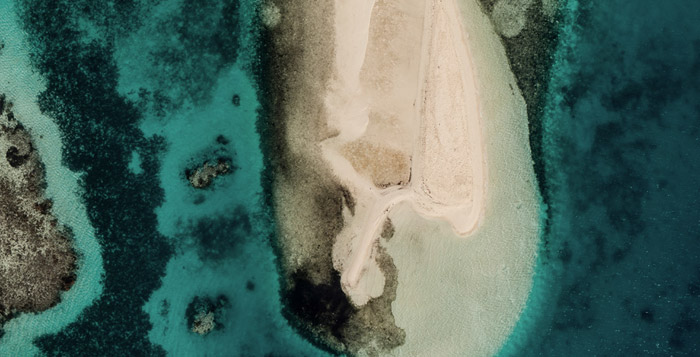
Cruise the Red Sea
For travelers seeking a getaway that blends culture, adventure and balmy summer sun, a cruise is the ultimate luxury experience. Escape to culinary feasts, elegant spas, and boundless skies, as you drift between islands and sail for the horizon, taking in a world of wonder, of white sand atolls, lapping waves and shoals of jewel-bright fish. The best way to gain an overview of this beautiful and diverse coastline is by ship – and particularly from the opulent upper deck of a sleek, luxury liner.
Riyadh
Riyadh is at first glance a modern metropolis, its highways hives of activity amongst urban highrises. But delve beneath its shiny new façade and the city’s fascinating centuries-old history can still be found within its atmospheric souqs, compelling museums and ancient architecture.
Throw in a burgeoning art scene with contemporary settings like Mono Gallery and Noqtah Studio, and this blend of medieval and millennial makes for a beguiling cultural union, one where Arabia’s first roots can be traced, and where its bold future can be envisaged. It’s the perfect setting for a staycation or weekend break, exploring the best of the capital’s cultural appeal.
What to see
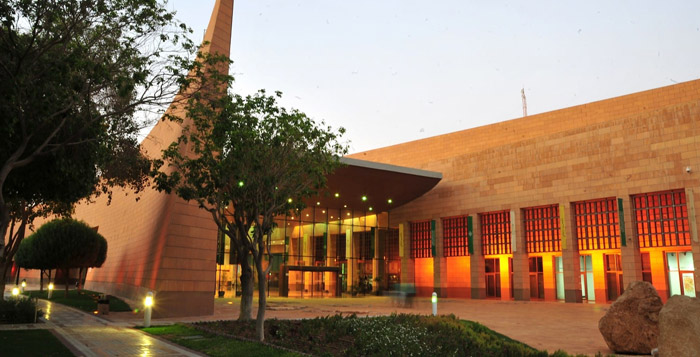
The Saudi National Museum
The Saudi National Museum has over 3,700 antiquities on show, documenting the grand history of Arabia over millennia. Beginning with pre-historic skeletons and a meteorite from the vast Rub Al Khali desert, through pre- Islamic Arabian kingdoms, it portrays the birth and rise of Islam, and the creation of the modern kingdom, following the 1902 capture of Riyadh. The famous battle behind this birth centres on another must-visit location, Al Masmak Fortress. Built in 1865 and superbly preserved, the fort houses a collection of photographs charting the city’s evolution over the years.
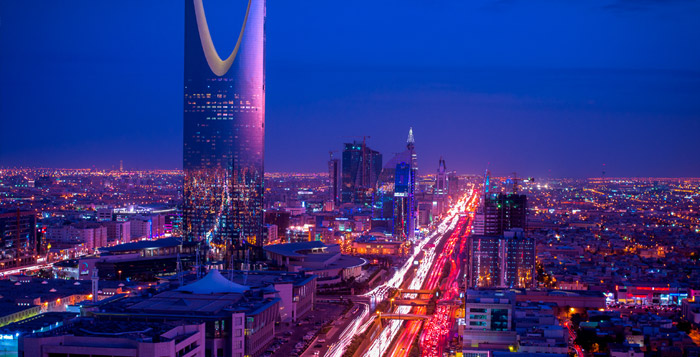
Souq Al Zal
Located only a few minutes’ walk from the Masmak Fort, the Souq Al Zal remains as noisy and vibrant as when it first emerged back in 1901. Filled with the scent of burning oud and the din of cheerful hawkers, the crackle and hubbub here is at its peak on Friday evenings during the Haraj auction, when merchants display their rarest goods of the week. Everything from gold coins to quirky handcrafts and dusty antiques can be found here, with traditional Saudi items such as dallah coffee pots, hooked jambiya daggers and mabkhara incense burners making for excellent souvenirs.
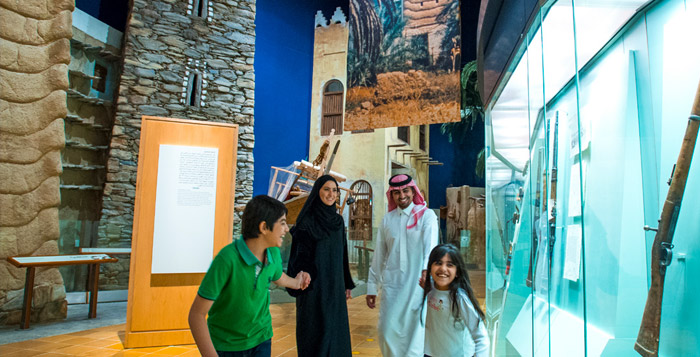
Sample Saudi cuisine
Perhaps the best way to experience Riyadh’s cultural fusion is through its cuisine, with combined dining and heritage experiences like that at Najd Village. Here, faithfully recreated Najd architecture creates a traditional environment and authentic recipes like kabsa, jareesh and hashi are served in a setting ideal for group dining, with its plentiful platters the best way to sample the full menu. More contemporary takes can be found at the sophisticated Takya, serving Saudi fusion food inspired by the country’s regions, and Suhail, with its modern spin on traditional Saudi favourites.
Tabuk
The northwestern city of Tabuk has long been a resting point of for Jordanian and Egyptian pilgrims with a rich Bedouin culture that can be felt in Souq Twaheen, which still supplies patterned rugs and goat-hair tent covers for modern nomads.
Today’s Tabuk marks the Northern point of the Saudi coast, but is also a base for exploring wild beauty spots and the story of the Prophet Moses, who is believed to have lived east of the city for a decade. It’s possible to visit the carved tombs of Maghaer Shuaib in the desert, or the Moses Spring near Maqna, where natural springs still flow under the date palms.
Nearby is the stunning Tayeb Al Ism, a steep granite massif separated from the turquoise-fringed Gulf of Aqaba by only the road. For clear seas and sun-swept-beaches, explore the charms of local coastal towns Haql and Sharma.
What to see
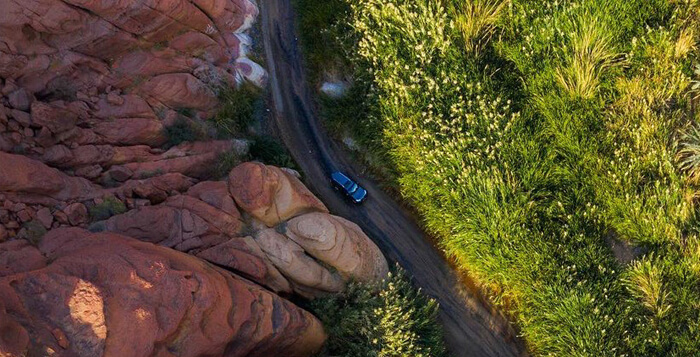
Tabuk Castle
There are spectacular fortresses all around Tabuk, but this imposing castle in the center of town might be the oldest. Known to date from 1559, some claim there was a fortress here as early as 3,500BC. Inside its walls, two mosques are linked by courtyards, stairwells and watchtowers and there’s a small museum detailing the history of the castle and the wider city – from the great explorers that visited, like Ibn Battuta, to the caravans of pilgrims who would stop to drink from its wells on their way to Makkah and Medina.
Al Disah Valley
At the crossroads of three valleys south of Tabuk, the wildly sculpted sandstone columns of Wadi Al Disah (Valley of the Palms) look like a mix between the Grand Canyon and Monument Valley in America. While much of the landscape is ochre desert, there are oases of pools, tall grasses and palm trees running through deep canyons, creating an otherworldly feeling, especially during glowing sunsets. It’s possible to hike through much of the valley, or visit on a 4WD drive tour.
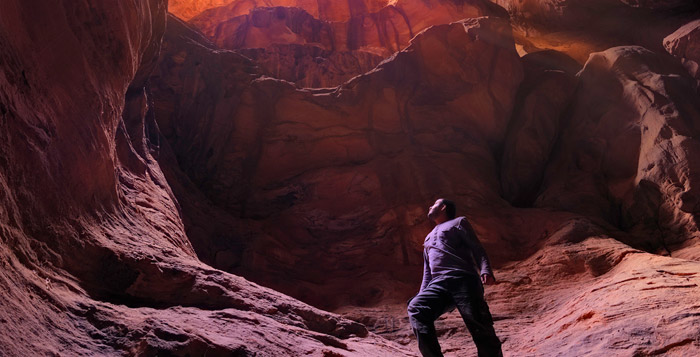
Maghaer Shuaib
The Maghaer Shuaib seems to appear from nowhere in the reddish desert west of Tabuk – its elegantly carved facades and tombs built into the sandstone rocks recalling Petra in Jordan and Hegra at Al Ula. According to tradition, having fled Egypt, Moses lived here for a decade under the patronage of the Prophet Shuaib, who had been impressed by Moses’ chivalry and offered his daughter’s hand in marriage. Moses eventually returned to Egypt, but it’s easy to imagine that this beautiful place stayed with him.
Taif
Just reaching Taif is a thrill. From the hollow of Makkah, a beautiful serpentine road winds up through the mountains to the plateau where Taif sits, passing fruit markets, rose farms and deep valleys. Taif is often referred to as the City of Roses, for the famously fragrant flowers that grow in the wadis and mountains around it. It’s also known as Saudi’s unofficial summer capital.
Because of its altitude, Taif is a cool escape from the summer heat, especially in the beautiful nearby mountains of Al Shafa, where baboons frolic in front of plunging valleys. While the roses bloom in April, the city really blossoms in August, where the Souq Okaz cultural festival and the Crown Prince Camel Festival are just a few of the attractions around town.
What to see
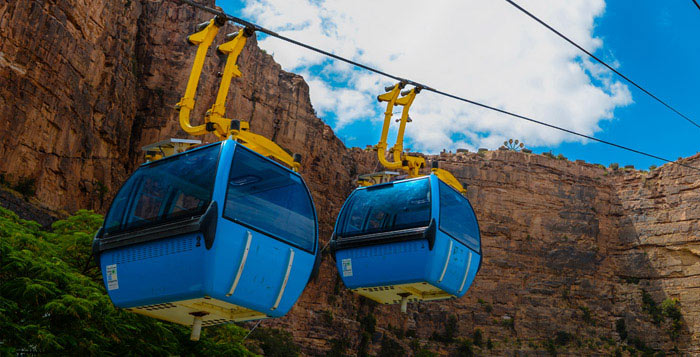
Al Hada Mountain
is a place of comedic baboons, rose fields and natural vastness. A curving road sweeps elegantly down the mountainside, as do ancient zig-zagging camel trails. As the sun sets and locals gather at lookout points, the rows of mountains on the horizon are cast in a greyish ombré. Saudi’s longest cable car runs between the mountaintop and the wadi floor, where there’s a water park and toboggan slide at the Al Khar Tourist Village.
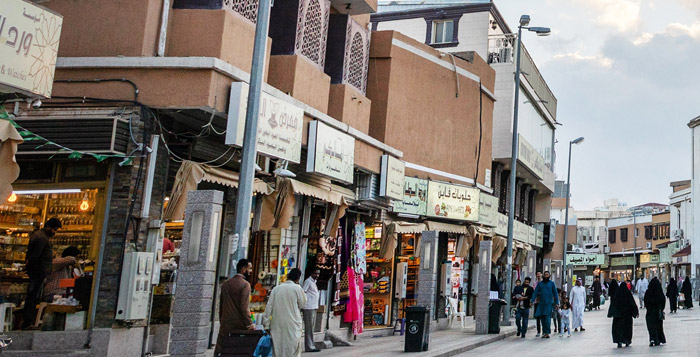
Taif Central Market
Taif’s central market is a labyrinth of narrow alleys through sand-colored buildings to peaceful plazas. Laid out in themed areas, there are colorful, fragrant sections devoted to rich local honey, perfume (especially rose water and oil), Islamic dress and jewelry. Street jewelers with blow torches work on silver rings inlaid with Yemini agate, while nearby shops sell elaborate body pieces made of gold mined near Medina. Sellers of ghee milk, oud, decorative swords and healing herbs are all part of a quintessential Taif experience.
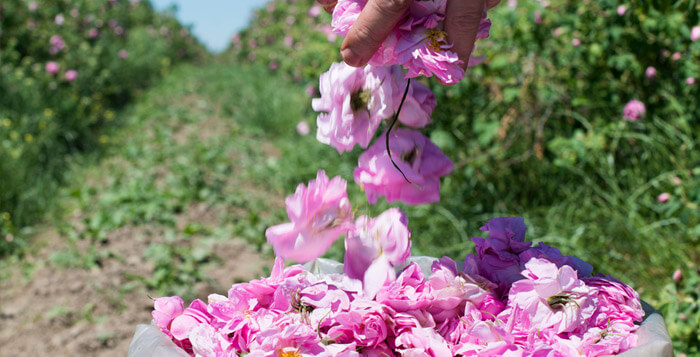
Taif’s Rose Fields
Every year, Taif turns pink and red, as the city’s famous -30petal damask roses scent the air. In the City of Roses, more than 900 rose farms produce well over 300 million flowers, which are harvested to produce the world’s most expensive rose oil, or attar. See the mechanism first-hand with a guided visit to one of the city’s rose factories, or visit Taif’s central market to brows
